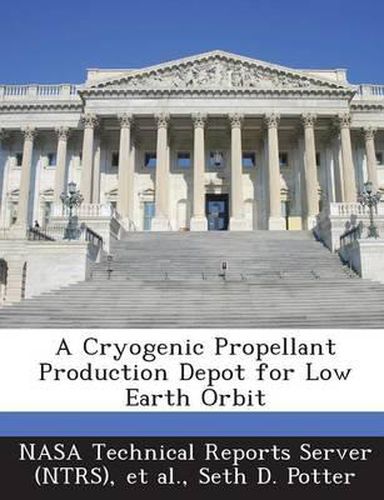Readings Newsletter
Become a Readings Member to make your shopping experience even easier.
Sign in or sign up for free!
You’re not far away from qualifying for FREE standard shipping within Australia
You’ve qualified for FREE standard shipping within Australia
The cart is loading…






The cost of access to space beyond low Earth orbit can be lowered if vehicles can refuel in orbit. The power requirements for a propellant depot that electrolyzes water and stores cryogenic oxygen and hydrogen can be met using technology developed for space solar power. A propellant depot is described that will be deployed in a 400 km circular equatorial orbit, receive tanks of water launched into a lower orbit from Earth by gun launch or reusable launch vehicle, convert the water to liquid hydrogen and oxygen, and store Lip to 500 metric tonnes of cryogenic propellants. The propellant stored in the depot can support transportation from low Earth orbit to geostationary Earth orbit, the Moon, LaGrange points, Mars, etc. The tanks are configured in an inline gravity-gradient configuration to minimize drag and settle the propellant. Temperatures can be maintained by body-mounted radiators; these will also provide some shielding against orbital debris. Power is supplied by a pair of solar arrays mounted perpendicular to the orbital plane, which rotate once per orbit to track the Sun. In the longer term, cryogenic propellant production technology can be applied to a larger LEO depot, as well as to the use of lunar water resources at a similar depot elsewhere.
$9.00 standard shipping within Australia
FREE standard shipping within Australia for orders over $100.00
Express & International shipping calculated at checkout
The cost of access to space beyond low Earth orbit can be lowered if vehicles can refuel in orbit. The power requirements for a propellant depot that electrolyzes water and stores cryogenic oxygen and hydrogen can be met using technology developed for space solar power. A propellant depot is described that will be deployed in a 400 km circular equatorial orbit, receive tanks of water launched into a lower orbit from Earth by gun launch or reusable launch vehicle, convert the water to liquid hydrogen and oxygen, and store Lip to 500 metric tonnes of cryogenic propellants. The propellant stored in the depot can support transportation from low Earth orbit to geostationary Earth orbit, the Moon, LaGrange points, Mars, etc. The tanks are configured in an inline gravity-gradient configuration to minimize drag and settle the propellant. Temperatures can be maintained by body-mounted radiators; these will also provide some shielding against orbital debris. Power is supplied by a pair of solar arrays mounted perpendicular to the orbital plane, which rotate once per orbit to track the Sun. In the longer term, cryogenic propellant production technology can be applied to a larger LEO depot, as well as to the use of lunar water resources at a similar depot elsewhere.